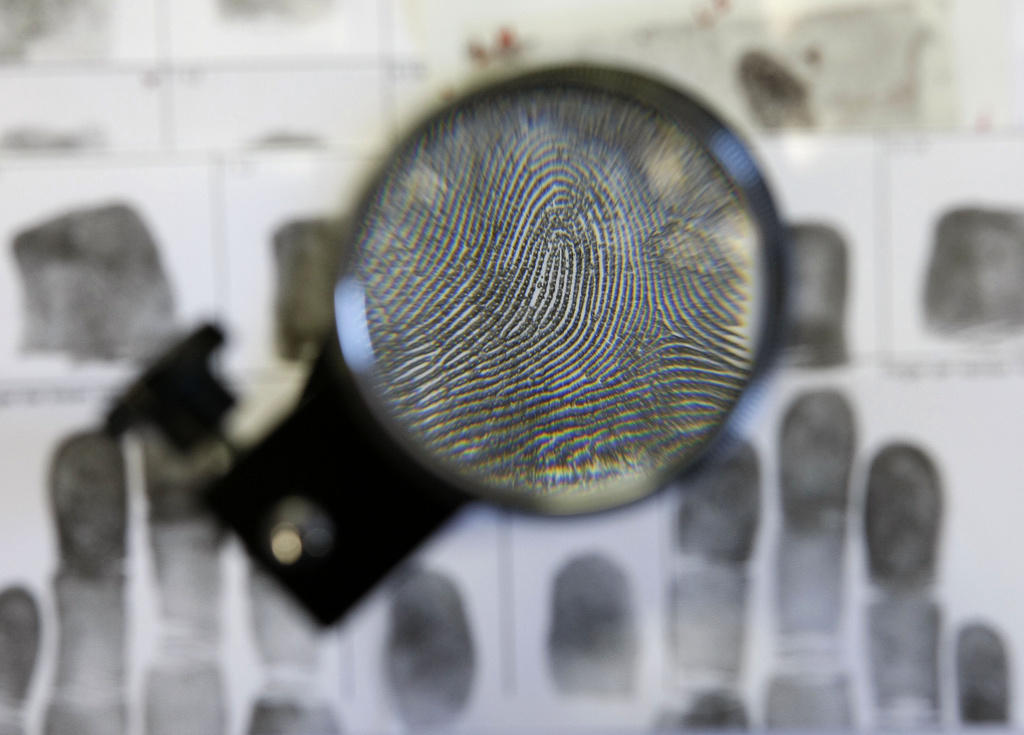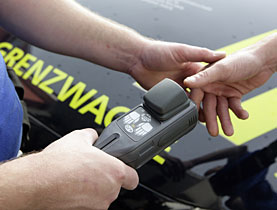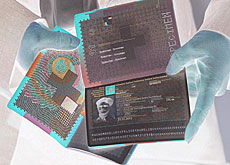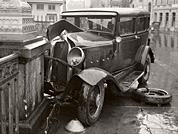Fingerprint expert rules out the perfect crime

The director of the School of Criminal Justice at Lausanne University – the oldest in the world – tells swissinfo.ch about getting innocent people off the hook.
Pierre Margot, 61, is one of the leading fingerprint experts in the world. In 2011, he was awarded the prestigious Douglas M Lucas medal from the American Academy of Forensic Sciences for outstanding international contributions to forensic science.
At the end of the 19th century, Sherlock Holmes was using the latest scientific techniques to solve mysteries; interest in forensic medicine has exploded thanks to hit television shows such as CSI: Crime Scene Investigation and Dexter.
According to Margot there’s no such thing as a perfect crime, but there’s also no such thing as a perfect investigation…
swissinfo.ch: Why was this forensic institute founded in Switzerland?
Pierre Margot: Pure chance! The idea goes back to a German student. At the end of the 19th century Archibald Rudolph Reiss studied for a PhD in chemistry here. A keen amateur photographer, he was also interested in any possible scientific application of photography.
After meeting a forensic pioneer, Reiss began organising lectures. Then in 1909, as a result of his initiative, the first institute of forensic science in the world was founded.
swissinfo.ch: What plans does your institute have for the future?
P.M.: I’d like to broaden knowledge and skills so people can improve their understanding of the information contained in traces, for example fingerprints left behind by a criminal. It’s all about developing a sort of “trace culture” that lets people dig out information contained in a fingerprint.
swissinfo.ch: So you work closely with investigators?
P.M.: Not directly. We only get involved at the request of prosecutors and judges. Every year we produce hundreds of reports which we send all over the world.
swissinfo.ch: What do you find more satisfying: convicting someone who’s guilty, or exonerating someone who’s innocent?
P.M.: Philosophically I’d say saving someone who’s innocent, although it’s better for victims when we manage to put away culprits. But that’s for the court to decide. Personally I’m pleased when I can give the decision makers useful information.
swissinfo.ch: You received this year’s Douglas M Lucas award for your “pioneering” role. What does that mean?
P.M.: It means all my work on fingerprinting and tracing was recognised internationally. Some techniques I developed are now routinely used by the police. Since 1989 our institute has been the benchmark for fingerprinting and is well-known for its educational philosophy and epistemological view of trace evidence.
swissinfo.ch: What techniques are used to collect and identify fingerprints?
P.M.: There are various methods, physical and chemical. It depends on the type of surface and the trace. Traditionally a special powder is sprinkled on the surface.
Prints under water can also be “powdered” thanks to fatty traces that are left behind by fingers. This technique was developed when I was in Australia. It allowed us to identify who was responsible for sinking the Rainbow Warrior. We were able to ascertain that it was French foreign intelligence services who planted the bomb under Greenpeace’s flagship.
Another method involves using light in order to identify amino acids secreted by our fingers. Our institute was the first to develop this technique, which is based on antigen-antibody reactions.
swissinfo.ch: Are fingerprints infallible or is there a margin of error?
P.M.: A print is an imperfect representation of the real finger. The better the print, the less the risk of an error. Often a mistake is made not in the print itself but in interpreting it.
We saw that after the Madrid attacks in 2004 [when a series of coordinated bombings on commuter trains killed 191 people]. Imperfect prints were found on some bombs that hadn’t exploded – the FBI put them into their database, which came up with a lawyer from Oregon. Two weeks later this turned out to be a massive mistake [the FBI agreed to pay the man $2 million (SFr1.8 million) in compensation].
swissinfo.ch: I’ve been in your office for an hour. What traces have I left behind?
P.M.: On the chair there’s definitely a lot of textile fibres. Then there’ll be skin cells, hairs and traces of spit. Also, on you there’ll be dust from my desk and traces from my handshake.
It would be difficult to convince a judge that you’ve never set foot in this room…
Pierre Margot was born in 1950 and studied at Lausanne University, receiving a degree in forensics and criminology.
He did a PhD at Strathclyde University in Scotland on poisonous and hallucinogenic mushrooms.
After studying in the US and Australia, in 1986 he became director of the School of Criminal Justice at Lausanne University.
Along with his team he has developed new investigation methods, particularly in the area of fingerprints.
In 2011, he received the prestigious Douglas M Lucas medal from the American Academy of Forensic Sciences.
Fingerprinting or dactyloscopy (derived from Greek “daktylos” meaning “finger” and “skopein” meaning “to examine”), is a technique for identifying a person. The technique benefits from the fact that the papillary lines on hands and fingers are unique to everybody.
Fingerprints were used as signatures in ancient Babylon in the second millennium BC, but fingerprinting has only been used for police purposes since the middle of the 19th century.
In Switzerland, the automated fingerprint identification system, AFIS, has been in use since 1984.
AFIS allows for the search of ten-finger traces and traces secured on a crime scene (including traces from the ball of the thumbs and the side of the hands). People’s finger and palm prints are taken either directly by means of a high-definition scanner or using ink on a fingerprint sheet that is afterwards scanned into the database.
As of 2009, the AFIS database contained about 30,000 two-finger prints, 725,000 ten-finger prints (550,000 of which are with palms) as well as 50,000 outstanding crime scene traces.
Nevertheless, the validity of forensic fingerprint evidence has been challenged by academics, judges and the media. The subjective nature of matching, despite a very low error rate, has made the forensic practice controversial.
(Adapted from German by Thomas Stephens)

In compliance with the JTI standards
More: SWI swissinfo.ch certified by the Journalism Trust Initiative





You can find an overview of ongoing debates with our journalists here. Please join us!
If you want to start a conversation about a topic raised in this article or want to report factual errors, email us at english@swissinfo.ch.